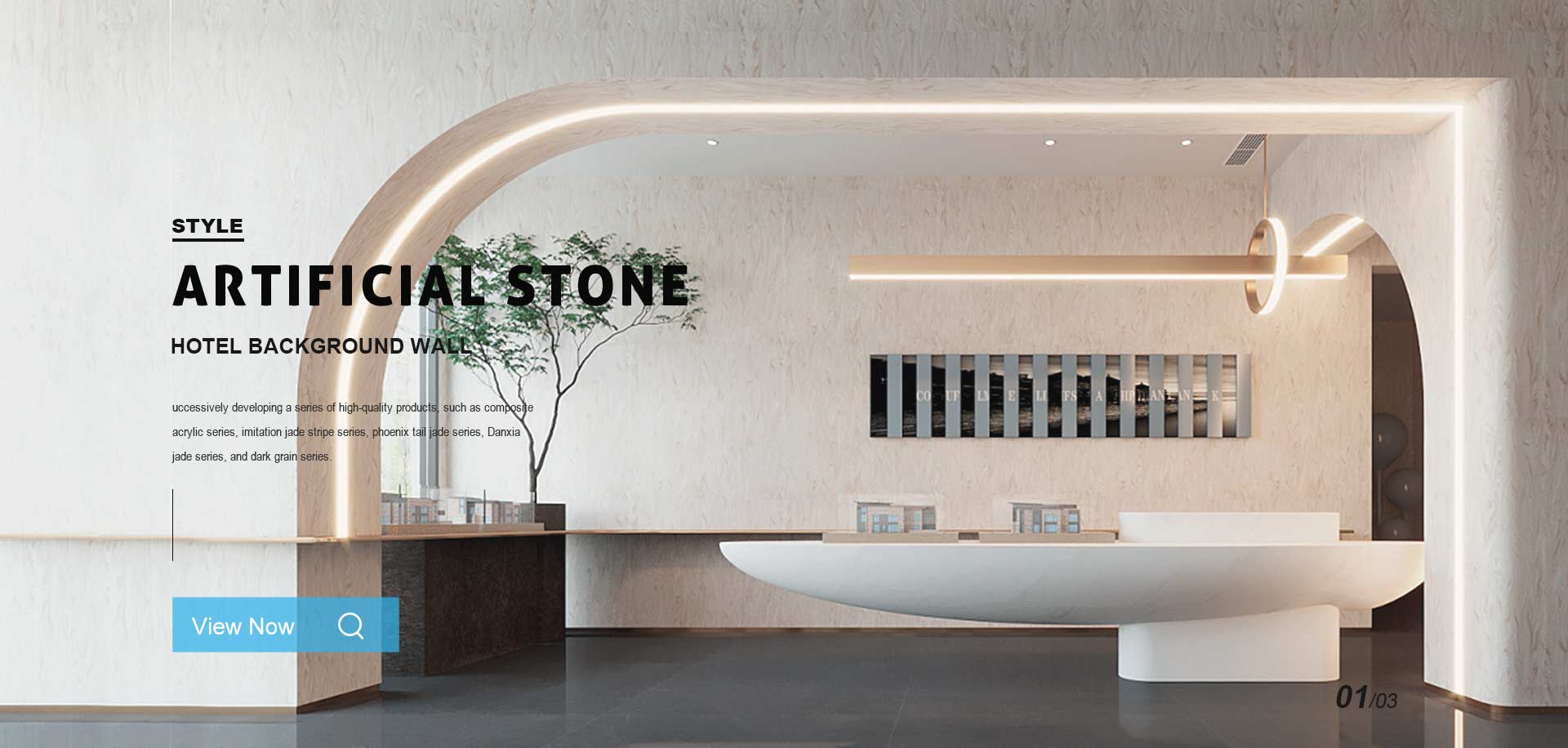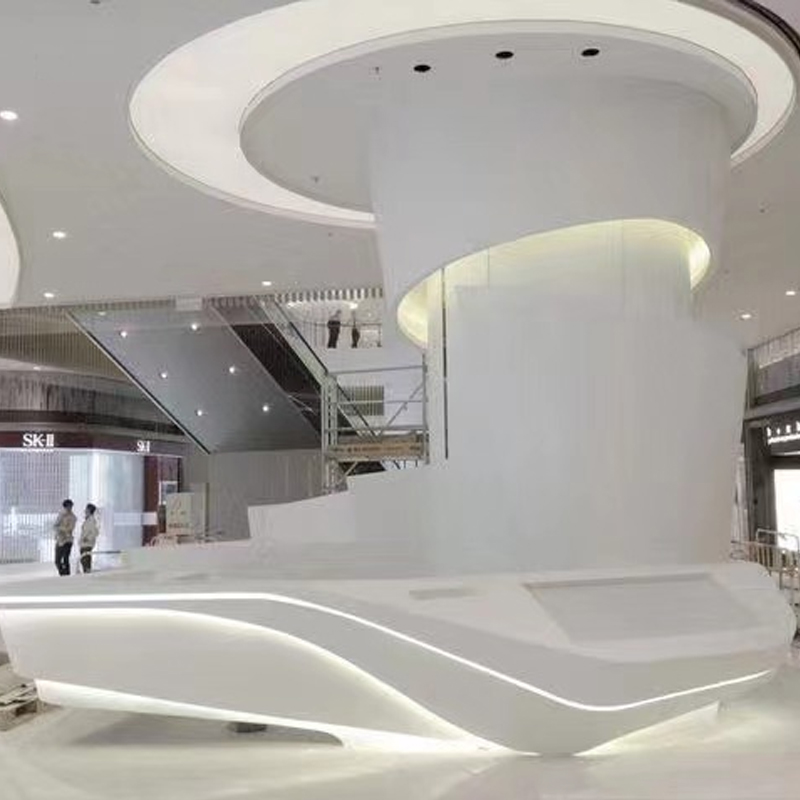
Artificial Stone columns, also known as faux stone columns or manufactured stone columns, are architectural elements designed to replicate the appearance of natural stone while offering superior performance characteristics. These columns are typically composed of a mixture of high-performance concrete (compressive strength: 40-60 MPa), polymer resins (10-20% by volume), and natural stone aggregates (granite or quartz particles sized 0.5-5mm). The manufacturing process involves precise casting techniques that create consistent textures and colors, with surface hardness ratings of 6-7 on the Mohs scale, comparable to many natural stones.
Key technical specifications:
Water absorption rate: <3% by weight (ASTM C97)
Freeze-thaw resistance: 100+ cycles without structural degradation (ASTM C666)
Thermal expansion coefficient: 8-12 × 10⁻⁶/°C
Load-bearing capacity: up to 15,000 psi for structural columns

The advanced material matrix includes:
Portland cement (Type I/II): 60-70% by weight
Silica fume: 5-8% for reduced permeability
Polymer modifiers (acrylic/styrene-butadiene): 12-18%
Fiber reinforcement (glass/polypropylene): 0.5-1.5%
Engineering tests demonstrate:
Flexural strength: 800-1,200 psi (ASTM C348)
Modulus of rupture: 1,000-1,500 psi
Impact resistance: 4-6 Joules (ASTM D5420)
Fire rating: Class A (ASTM E84) with flame spread index <25
The engineered surface provides:
UV stability: ΔE <3 after 5,000 hours xenon arc testing
Abrasion resistance: 7-9 on the ASTM D4060 scale
Color consistency: ±2 ΔE units batch-to-batch
Facade systems: Used as load-bearing or decorative elements in commercial buildings with spans up to 6 meters between supports
Historical restoration: Replicate deteriorated stone columns with 95-98% visual accuracy to original designs
Landscape architecture: Perimeter columns for pergolas with wind load resistance up to 120 mph
Atrium features: Non-load-bearing columns with hollow cores (60-70% weight reduction) for easier installation
Retail spaces: Decorative columns with integrated lighting channels (cable passages 25-50mm diameter)
Residential applications: Fireplace surrounds with continuous heat resistance to 200°C
Marine environments: Columns with chloride diffusion coefficients <1.5 × 10⁻¹² m²/s for coastal installations
Seismic zones: Flexible column designs with ductility factors μ >4 for earthquake resistance
Modular construction: Prefabricated column sections with ±1mm dimensional tolerance for rapid assembly
Recommended cleaning protocol:
Frequency: Quarterly for exterior, biannually for interior
Solution: pH-neutral cleaner (6.5-7.5) diluted to 5-10% concentration
Method: Soft-bristle brushing at 20-40 psi pressure
Rinse: Deionized water to prevent mineral deposits
Advanced protection options:
Silane/siloxane sealers: Penetration depth of 3-5mm, effective for 5-7 years
Nano-coatings: TiO₂-based treatments providing 90% photocatalytic degradation of organic stains
Anti-graffiti coatings: Sacrificial layers removable with low-pressure (600 psi) washing
Inspection and repair guidelines:
Annual inspection for cracks >0.3mm width
Epoxy injection for structural repairs (viscosity 200-400 cps)
Color-matching patches with ΔE <1.5 from original
Anchorage inspection torque values: ±10% of specified preload
Environment-specific measures:
Coastal areas: Biannual chloride extraction treatments
Industrial zones: Acid rain protection with pH-buffering coatings
Freeze-thaw regions: Hydrophobic impregnation to limit water uptake below critical saturation
Artificial Stone columns exhibit several superior technical properties compared to natural stone:
Compressive Strength: Ranges from 80-150 MPa, significantly higher than most natural stones (typically 30-100 MPa)
Flexural Strength: 15-25 MPa, approximately 2-3 times that of natural stone
Density: 2.3-2.5 g/cm³, providing excellent structural stability
Thermal Expansion Coefficient: 7-12 × 10⁻⁶/°C, lower than natural stone (8-15 × 10⁻⁶/°C)
Color Stability: Maintains ΔE < 3 after 3000 hours of accelerated weathering testing
Fire Resistance: Achieves Class A1 rating according to EN 13501-1, with melting points exceeding 1200°C
The unique combination of aesthetic appeal and technical performance makes artificial stone columns suitable for diverse applications:
Facade Systems: Used as load-bearing or decorative elements in curtain wall systems, with typical spans of 3-6 meters between supports
Interior Design: As feature columns in atriums and lobbies, available in diameters from 300mm to 1200mm
Historical Restoration: Precisely matched replacements with ±0.5mm dimensional tolerance for heritage buildings
Garden Features: Withstand freeze-thaw cycles (tested to 100 cycles at -30°C to +50°C)
Pool Surrounds: Non-porous surface prevents bacterial growth (>99.9% reduction in E. coli adhesion)
Public Spaces: Vandal-resistant with Mohs hardness of 6-7
Bridge Aesthetics: As cladding for structural piers, with 25-50mm thickness options
Seismic Zones: Demonstrated ductility ratios of 4-6 in earthquake simulations
Coastal Structures: Chloride ion penetration resistance of < 0.1% by mass after 90-day salt spray testing
Proper maintenance ensures the longevity of artificial stone columns:
Use pH-neutral cleaners (pH 7-8.5) diluted to 1:10-1:20 ratio
Clean with soft brushes (< 1000 grit) or microfiber cloths
Rinse with water pressure < 50 bar at > 30° angle
Apply penetrating sealers every 3-5 years (silane/siloxane based, 0.1-0.3 L/m² application rate)
Inspect joints (2-5mm width) annually for sealant degradation
Check structural connections (stainless steel anchors) for corrosion every 2 years
For graffiti removal: Use biodegradable solvents with < 5% VOC content
Stain treatment: Poultice of diatomaceous earth and ammonium bifluoride (<1%)
Polishing: Diamond abrasives (50-3000 grit) at < 1500 rpm
For heavily soiled columns, steam cleaning at 120-150°C with < 5 bar pressure can restore original appearance without damaging the surface. Always test cleaning methods on inconspicuous areas first.
When specifying artificial stone columns, engineers should consider:
Thermal movement: Allow 1mm per linear meter for expansion joints
Load transfer: Maximum bearing pressure of 15 N/mm² at supports
Fire ratings: Maintain 50mm minimum thickness for 90-minute fire resistance
Acoustic performance: Provides STC 45-50 sound transmission class